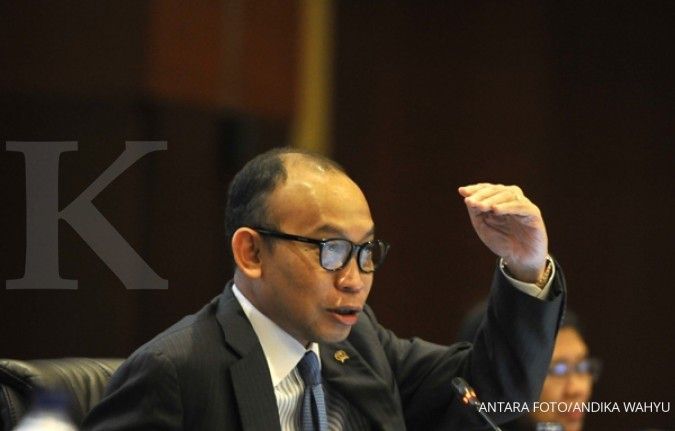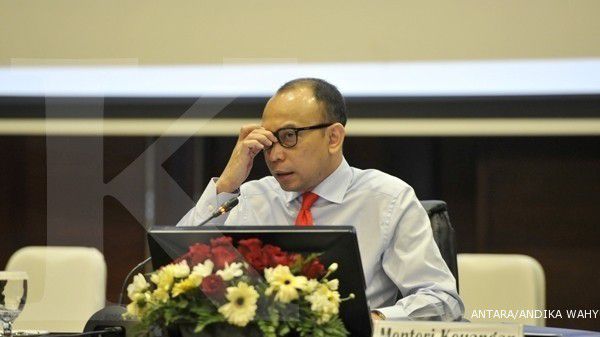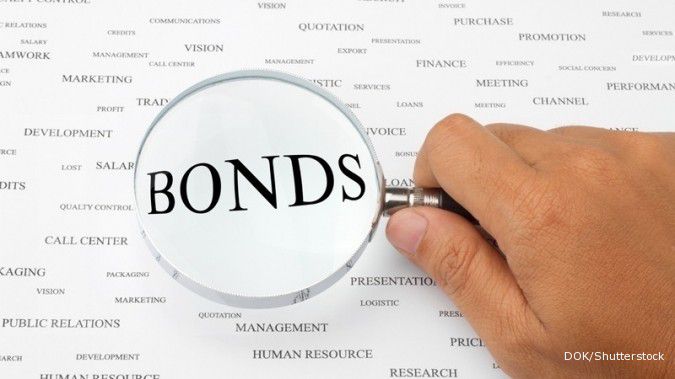JAKARTA. Indonesia’s fiscal and monetary authorities have confirmed they are now drafting regulations that aim to put the brakes on the country’s alarmingly rapid growth of external leverage.
For the fiscal authority, there has been a year-long “concern” on the growth of Indonesia’s debts both in the government and the private sector, Finance Minister Chatib Basri said.
Chatib said that the government would draft a standard operating procedure for state-owned enterprises (SOEs) wishing to borrow US dollars for their operations. In such cases, plans from any SOE wanting to tap overseas funds would be discussed thoroughly at the Office of the Coordinating Economic Minister before being granted approval.
“Which SOE could get foreign funding would depend on the approval discussed at the Office of the Coordinating Economic Minister,” he said recently.
“For instance, if we notice that an SOE already has too much foreign debt that could potentially spell trouble, then it ought to hold back [from borrowing dollars],” Chatib added.
Indonesia’s debt-to-service ratio (DSR), an indicator of total foreign debts compared to export earnings, stood at 46.3 percent in the first quarter of this year, according to the latest foreign debt statistics published by Bank Indonesia (BI).
This means that, of all total dollar-denominated income that the country gets from export proceeds, around half would be used to pay foreign debts.
For comparison, the present level of DSR has already doubled since President Susilo Bambang Yudhoyono began his second term in 2009, when the ratio stood at a mere 21.1 percent.
The government and BI are currently conducting a joint study on the possible implementation of a debt-to-equity ratio (DER) regulation, which would oblige private sector organizations to achieve a certain safe level of the ratio if they want to borrow dollars, according to Deputy Finance Minister Bambang Brodjonegoro.
To ensure that the regulation would not hamper local firms’ growth, it would have different DER thresholds for certain industries, given the fact that some business segments may need heavier leverage than others, Bambang explained.
Indonesia’s external leverage has been on the upward trajectory in recent years as local companies, taking advantage of the low interest-rate environment globally, have begun to tap overseas markets for dollars to finance their robust business expansion.
However, the rising foreign leverage poses the risk of liquidity mismatch, which could have a systemic impact on the economy. The financial calamity that occurred in Indonesia in 1997-1998 was triggered by the bankruptcy of many local private firms unable to pay their dollar-denominated debts, after the rupiah weakened significantly — to as high as 16,000 per dollar at the time.
Rating agency Standard & Poor’s (S&P) specifically warned Indonesia over its rising external leverage, citing such an economic risk as the major reason behind its refusal to grant the country an investment grade status. In April, S&P warned that the external indebtedness of Indonesia’s private sector was already “much larger” than other countries with a similar credit rating to Indonesia.
Last week, BI released statistics noting that Indonesia’s total debts increased 9.7 percent year-on-year to touch US$283.7 billion as of May. The debt level — 60 percent of which came from the private sector — might warrant “continuous vigilance” from policymakers, BI cautioned. (Satria Sambijantoro)
Debt rules prepared as RI leverage soars
July 21, 2014, 10.07 AM
| Source: The Jakarta Post

ILUSTRASI. Jeruk nipis
Editor: Hendra Gunawan
Latest News
-
April 25, 2024, 01.02 PM
Oil Steady as Market Weighs US Demand Concerns, Middle East Conflict Risks
-
April 25, 2024, 09.15 AM
US Seeks 3 years Prison for Binance Founder Changpeng Zhao
-
April 25, 2024, 08.37 AM
South Korea Prepares New Monitoring System to Detect Illegal Stock Short Selling
-
April 25, 2024, 08.15 AM
UNTR Business Strategy and Prospects When the Dollar Strengthens & External Sentiment
-
April 25, 2024, 07.15 AM
Stock Recommendations: PANI Achieves Marketing Sales of IDR 1.5 Trillion in Q1-2024
-
April 25, 2024, 06.15 AM
11 Large Indonesian Banks Print Fantastic Profits in Early 2024
-
April 25, 2024, 05.34 AM
Meta Shares Sink on Higher AI Spending, Light Revenue Forecast
-
April 25, 2024, 05.21 AM
GLOBAL MARKETS - Equities Mixed as Investors Eye Earnings; Yen on Intervention Watch
-
April 25, 2024, 04.34 AM
US STOCKS - S&P 500 Higher as Markets Weigh Rising Yields, Upbeat Corporate Result
Most Popular
- Indonesia Plans to Export Directly to China Without Going Through Singapore
- Prabowo Vows to Fight for All Indonesians, Urges Unity Among Political Elites
- BI Rate Rises, Rupiah Strengthens 0.40% to Rp 16,155 per US Dollar Today (24/4)
- The IDX Composite (IHSG) Rises 0.90% to 7,174 on Wednesday (24/4)
- US Secretary of Defense Austin Called Prabowo After Being Named President Elect
- UNTR Business Strategy and Prospects When the Dollar Strengthens & External Sentiment
- Unilever Indonesia (UNVR) Records Profit Growth in the First Quarter of 2024
- US Seeks 3 years Prison for Binance Founder Changpeng Zhao
- Freeport Records Gold Sales of 16.10 Tons in Q1 2024
- Indonesian Banking Industry Remains Strong Amidst Global Economic Turbulence












